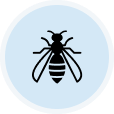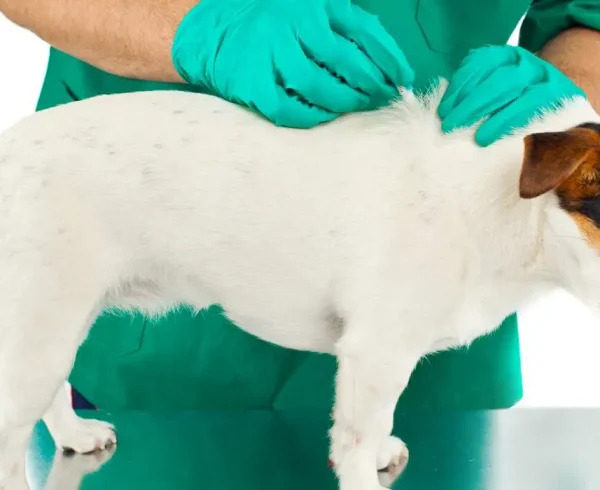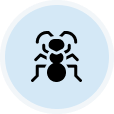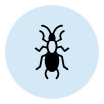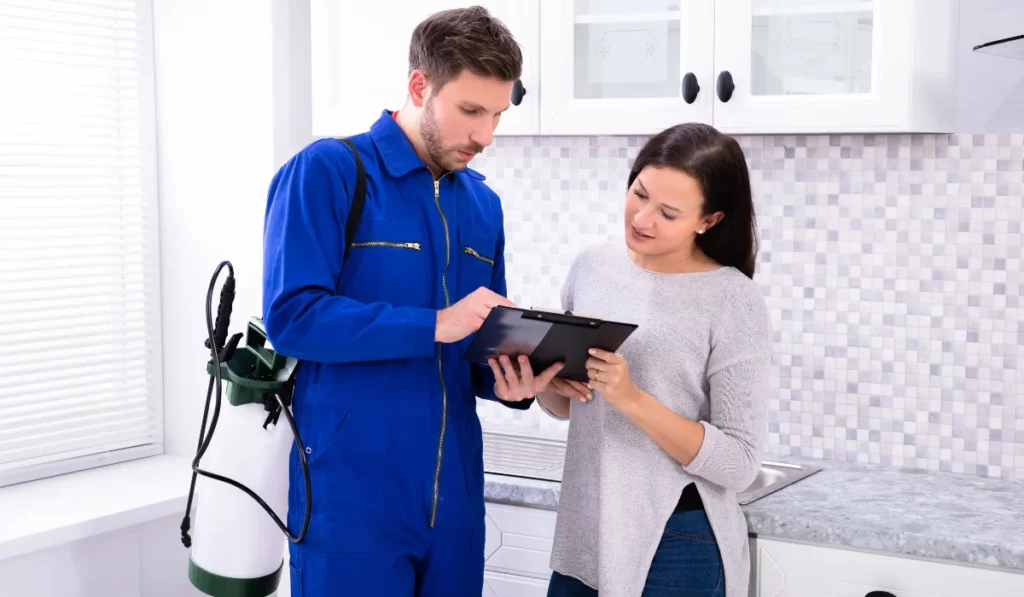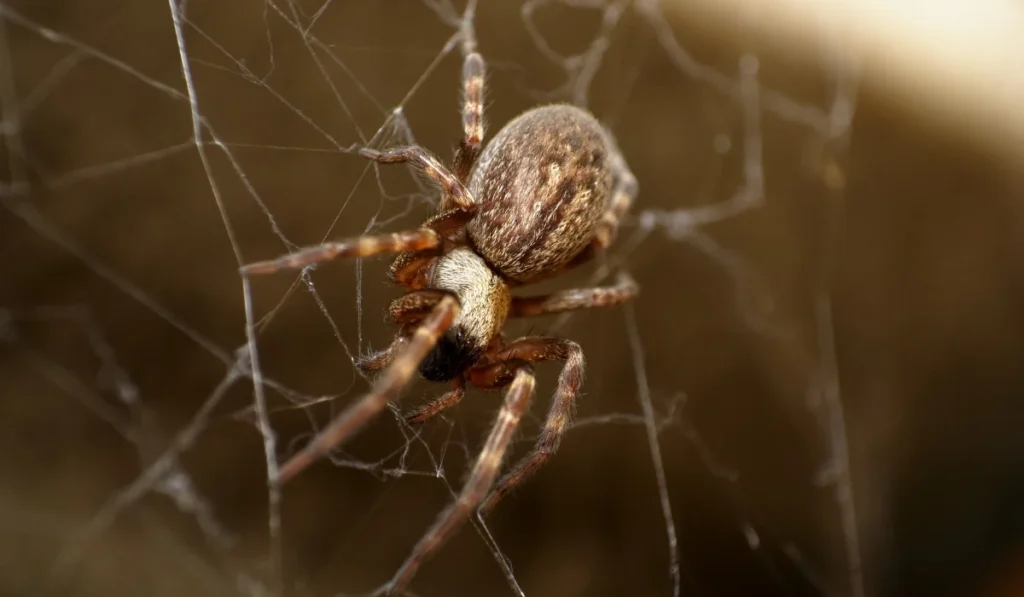A flea infestation can quickly turn your living space into a nightmare. Unfortunately, these pesky critters can take over your home, causing irritation and discomfort for you and your pet.
If you’re a landlord or tenant dealing with this issue, you might wonder how to effectively control it before resorting to professional help. Fortunately, you’re in the right place. This guide offers practical, do-it-yourself strategies to regain control of your home and ensure a flea-free environment.
Key Takeaways
- A flea infestation can be addressed with chemical treatments or natural home remedies like dish soap, baking soda, Diatomaceous Earth, and salt.
- Natural treatments disrupt the life cycle of fleas by luring, trapping, and dehydrating them, ultimately helping you get rid of fleas with less harsh insecticides.
- Consistency in application and treatment is crucial to control and eliminate fleas from your home effectively.
- For persistent or large-scale infestations, consider hiring professional exterminators. They have access to potent treatments and can offer advice on preventing future infestations.
Figure Out the Flea Source
Finding the source of the flea infestation is the first crucial step in reclaiming your home. Start by examining your pet’s bedding and favorite lounging spots, as these are often the epicenters of the infestation.
Fleas, particularly adult fleas, prefer warm and humid areas, like your pets’ fur. Check your pet using a flea comb, paying attention to places like the neck, base of the tail, and behind the ears.
Remember, flea eggs are tiny and often mistaken for dandruff or dust particles. If you spot these signs, it’s time to take immediate action.
Wash Your Pet’s Favorite Lounge Spots
Washing your pet’s favorite lounge spots can work wonders in combating a flea infestation. Fleas thrive in warm, cozy environments, often including your pet’s bedding, sofas, and cracks and crevices.
Start by thoroughly cleaning all pet bedding and washable furnishings in hot water. If possible, steam-clean furniture and carpets to kill flea eggs and larvae. Remember to treat less obvious areas like baseboards and corners, as fleas can easily hide in these spots.
A DIY natural flea spray made from warm water, lemon juice, and witch hazel can be handy for such areas. Regular and thorough cleaning is the key to keeping your home flea-free.
Vacuuming. Everywhere.
Vacuuming is a great method for removing fleas from your home. This mundane task can turn into a powerful weapon against a flea infestation. Fleas, their eggs, and larvae hide in your floors, carpets, and furniture — vacuuming these areas can significantly reduce the population.
Be sure to use a vacuum cleaner with a bag, as this helps contain the pests effectively. Pay special attention to areas where your pet spends a lot of time, as these are more likely to harbor fleas. Once you’re done, immediately dispose of the vacuum bag in an outside trash can to avoid the possibility of pests re-infesting your home.
Always remember to adopt a thorough and consistent vacuuming routine when combating fleas.
Treat Your Pet
Treating your pet is crucial in dealing with a flea infestation. After all, pets are usually the first victims of these unwelcome pests and can easily spread them throughout your home.
Start by giving your pet a thorough wash with a flea shampoo. This isn’t your ordinary bath; ensure you let the shampoo sit for at least 10 minutes before rinsing to kill off the adult fleas.
Afterward, a flea comb removes surviving fleas, eggs, or larvae. Be sure to treat your pet regularly with a recommended flea treatment, including spot-on treatments, oral medication, or flea collars.
Remember, the goal is to break the flea’s life cycle and prevent re-infestation. Consult your vet, if necessary, to decide on the most suitable treatment for your furry friend. Remember, always follow guidelines and instructions to guarantee the safety and effectiveness of the flea control methods.
Natural Remedies for Flea Control
While chemical treatment options can be effective, they often come with risks and potential side effects. As a result, many pet owners turn to natural home remedies for flea control. Below, we’ll explore several DIY methods to help you tackle a flea problem without using harsh chemicals.
Dish Soap
Dish soap is a surprisingly effective and budget-friendly flea control method. Start by filling a shallow bowl with warm water and adding a squirt or two of dish soap. Stir the mixture until it forms a soapy solution.
Place this homemade flea trap in areas where your pet spends most of their time or where you’ve noticed fleas. The dish soap lures the fleas with its fragrance, traps them with its slippery surface, and eventually kills them.
For best results, replace the soap and water mixture daily until you no longer notice any fleas. This method is beneficial for tackling fleas on dogs but can also help control fleas in your home.
Baking Soda
Baking soda, commonly found in most kitchens, can be an effective natural remedy against fleas. This household ingredient works by dehydrating the fleas and disrupting their life cycle.
To apply, sprinkle baking soda all over your carpets, rugs, and other potentially flea-infested areas, such as your pet’s bedding or favorite lounging spots. Rubbing the baking soda deep into the fabric, using a stiff brush to reach any hidden fleas or eggs.
After letting the baking soda sit for several hours, vacuum the treated areas thoroughly to pick up any dead fleas along with the baking soda. Repeat this process as needed until you no longer notice any fleas.
Please note that baking soda is generally safe for pets. However, always monitor your pet to ensure they don’t ingest large amounts, which may cause digestive discomfort.
Diatomaceous Earth
Diatomaceous Earth (DE) is a natural and non-toxic substance that can be effective in your flea control arsenal. Made from the fossilized remains of tiny aquatic organisms known as diatoms, DE works by penetrating the exoskeleton of the fleas and dehydrating them to death.
To use, simply dust a thin layer of food-grade Diatomaceous Earth over areas you suspect are infested, including carpets, pet bedding, and outdoor spaces. Let it sit for about 24 hours, then vacuum thoroughly to remove the DE and dead fleas. DE is safe for pets and humans, but avoid breathing it in as it can irritate the lungs.
Repeat the process as necessary until the flea infestation is under control.
Salt
Salt is another readily available and natural solution to combat flea infestations. Acting in a similar way to baking soda, it works by dehydrating and killing the fleas.
To use this method, finely grind some ordinary table salt and sprinkle it over flea-infested areas like carpets, pet bedding, and furniture. Cover the area comprehensively, rubbing the salt into the fibers where possible. Let the salt sit for 24 to 48 hours, enough time to work its magic. After this, thoroughly vacuum the treated areas to remove the salt and dead fleas.
Be cautious when using this method around pets, as excessive salt can be harmful if ingested. Repeat this process as necessary, and remember — consistency is key in defeating these tiny pests.
When to Call a Professional
Despite numerous home remedies and DIY treatments available for flea control, sometimes, the infestation may be too large or persistent, requiring the intervention of a professional exterminator.
If your efforts don’t reduce the flea population or your pet continues to show discomfort despite treatment, it may be time to call professional pest control.
Professionals have access to more potent treatments and can help identify and target hard-to-reach infestation sites that may be overlooked. Moreover, they can provide valuable advice for preventing future infestations. Remember, it’s essential to prioritize your pet’s comfort and health, and professional intervention may be the quickest and most effective way to restore peace in your home.


